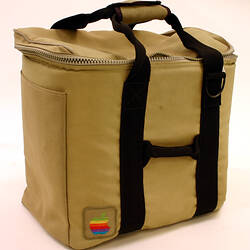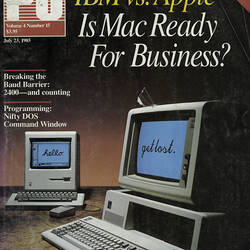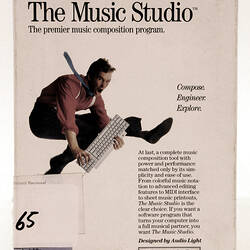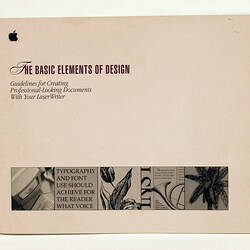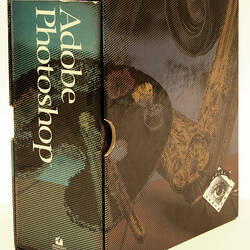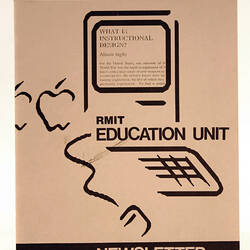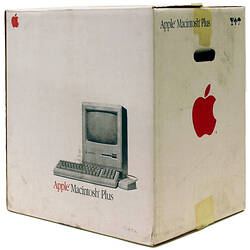Desktop publishing introduced a new era in publishing for the office, small business, education and the home. By 1986, developments in printing, especially the Laser printer with its Adobe PostScript scalable font and graphics system, and developments in software, such as Aldus' PageMaker, allowed Apple to bring to the market a breakthrough product: Desktop Publishing (DTP). This allowed individuals, schools and businesses to produce their own professional-looking publications with full WYSIWYG (what you see [on screen] is what you get [on paper]) without the need to send drafts to printing houses. The impact of DTP remains profound, and indeed its 'offspring' can be seen in the contemporary employment of web blogs, homepages, and podcasts, where the user can create their own content without reliance on mainstream media publishing houses. Mac II introduced the colour monitor to the Apple line, and the Mac Plus was networkable and was the first desktop computer to enable access to the internet.
Introduction of Desktop Publishing 1985 - 1991 is represented in the collection by: LaserWriter incorporating Postscript software; MacPlus; 3.5" floppy disk; SCSI cable; External floppy disk drive; Desktop publishing software; The Apple Laserwriter;
The Apple LaserWriter and its built-in Adobe Postscript page description software were two key elements in the desktop publishing (DTP) revolution. Other key elements were:
(a) the Macintosh Plus with its Graphic User Interface (GUI), 800k floppy disk drive and supporting up to 4MB of RAM;
(b) the external floppy disk drive for 800k floppy disks (which meant that the operating system could run on one disk in the computer and Aldus PageMaker on another disk in the external floppy disk drive, thus doubling the data that could be read into RAM without swapping floppy disks; and
(c) the Aldus PageMaker software (the first DTP software) which facilitated the ready combination of text and graphics in columns.
These five elements in all were all released within a very short period between 1985 and 1986 as follows:
Apple LaserWriter (with Adobe PostScript) March 1985
Aldus PageMaker 1.0 July 1985
Macintosh Plus and 800k external floppy disk drive January 1986
The purchase price of the LaserWriter dropped rapidly over a short period of time.
Note that the 512k Macintosh was released in September 1984 but only supported 512K in RAM and a 400k floppy disk drive. The next Macintosh 512k machine, known as the Macintosh 512ke did support an 800k floppy disk drive but was not released until after the Macintosh Plus, in April 1986. Thus it was the Macintosh Plus computer that came to be most closely associated with the very early days of DTP. It was soon to be followed by the Macintosh II to which could be attached such monitors as a 15 inch colour monitor or even a double A4 size greyscale monitor.
More Information
-
Keywords
-
Authors
-
Article types



